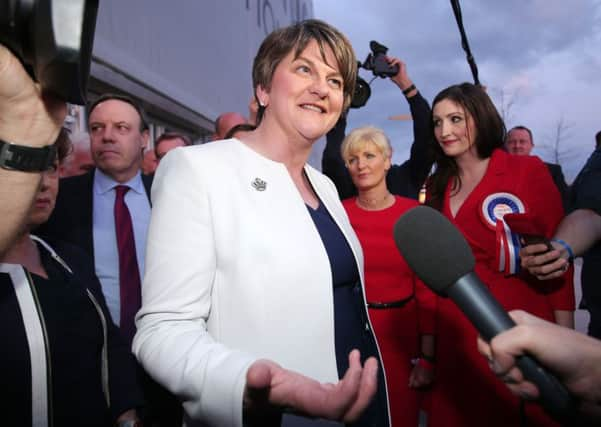Ben Lowry: The gradual emergence of the Rory McIlroy generation


Like the SNP in Scotland, it can feasibly try to depict itself as the ‘Party of Northern Ireland’.
But the results perhaps also show something else – the gradual rise of the Rory McIlroy generation.
Advertisement
Hide AdAdvertisement
Hide AdA growing number of young Ulster Catholics of his generation (he is aged 27), who are now well into voting age, seem like him to be uninterested in traditional Catholic Irish nationalism.
Perhaps the most striking feature of this result, even more than the impressive DUP outcome, is the ongoing decline of such nationalism.
Sinn Fein and the SDLP combined got only 36.0% of the first preference votes. In last year’s general election they got 38.4% and in the 2011 Assembly election the total ‘Green’ vote was 41.1%.
Even if you add the People Before Profit 2% this time, which was overwhelmingly in nationalist areas, the combined Sinn Fein-SDLP vote is lower than either of those two big recent elections.
Advertisement
Hide AdAdvertisement
Hide AdNationalism was long thought to be on a relentless upward trajectory, as was apparent during the Troubles. In 1983, for example, Sinn Fein and the SDLP held a mere two out of the then 17 Westminster seats. By last year, they held seven out of the increased total of 18 seats.
Despite a higher Catholic birthrate during the late 20th century, the increased overall population of a Catholic background no longer is translating into greater nationalist political representation.
It might be a stall in the march of nationalism that will resume again, or it might be that the Rory McIlroy generation has no appetite for unity.
A significant percentage of the Catholic population in Northern Ireland now identifies as ‘Northern Irish’ as opposed to ‘Irish’.
Advertisement
Hide AdAdvertisement
Hide AdBut this has not been a particularly good election for the centre ground, as you might expect from an emerging generation that was less likely to be tribal. Having said that, the combined Alliance and Green vote has edged up from 8.6% in 2011 to 9.7% now.
It is unclear whether the tactic of promoting Arlene Foster or of warning about a Sinn Fein First Minister was the more effective in the DUP success, but the latter prospect now seems a distant one.
Almost all pundits expected the DUP to lose seats, but they didn’t. It is entrenched as the dominant party in unionism despite the Ulster Unionists having revived in the council and general elections.
Sinn Fein has just about withstood an assault from People Before Profit, who won two seats, to maintain its position.
Advertisement
Hide AdAdvertisement
Hide AdBefore the election, I wondered if the anti incumbency mood that has swept much of the West would affect Northern Ireland: in America there has been the rise of Donald Trump and Bernie Sanders, Australia has worked through a succession of prime ministers in quick succession, as has Italy, in France the National Front is a major force, in the Republic there has been a big rise in independents and minor parties, and even in Britain – where the incumbent Tories were returned to power with extra seats on 2010 – there has been the rise of Ukip and Jeremy Corbyn.
There was no indication of a surge in independents and minor parties ahead of this election, and for good reason – there was no such surge.